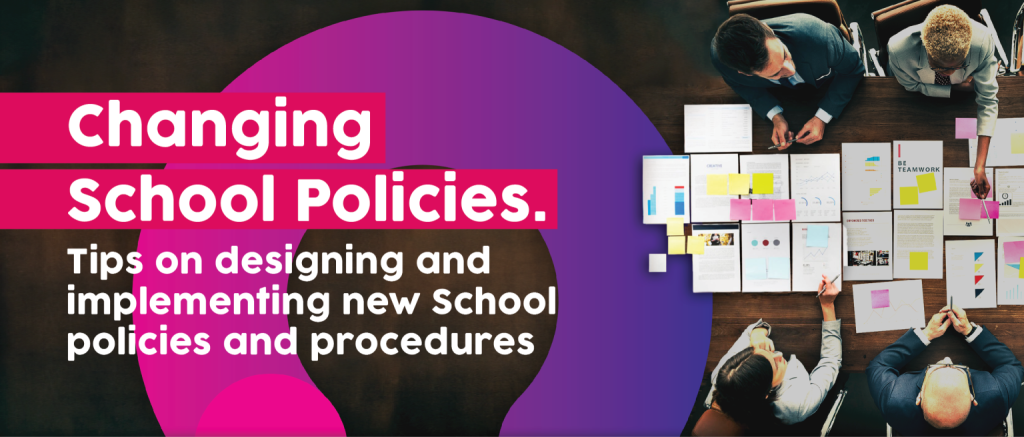
Tips on designing and implementing new School policies and procedures
Teachers don’t likes change, that is to say, they don’t like changes in policies and procedures. They have enough to deal with in changing classes each year and learning the names and idiosyncrasies of a whole room full of new faces. Not to mention updates to the syllabus and using new technology. But schools cannot remain static in the way they operate and there is always a need for new policy to guide and regulate how things are done, so that the school can ensure a consistent or even improved level of education. So what can policy makers do to ensure that the design and implementation of changes in the system are effective and well received?
First of all, what’s in it for them? Before embarking on any policy or procedure changes, you need to identify a clear need for the change in your school, not just because other schools are doing it. Set clear objectives for a problem that needs to be solved or processes that needs to be improved. Be very specific in defining your goals. How will the change or new policy advance how teachers/students perform or how will it improve outcomes for the school as a whole. What gain will there be for the pain of making a change in the way things are done?
Secondly, make sure that the objectives are realistically achievable.
- Does the school have the financial ability and commitment to implement the changes?
- Can the policy design and implementation be done in realistic timescales? If the process takes too long, the goals may change.
- Does your school have the manpower resources to dedicate to keeping the project moving forward?
- Does it have the backing of major stakeholders?
- Consider the context of implementation; what else is occurring while you are planning your roll out which may impact how the new policy is received.
Thirdly, you need to be certain that the desired outcome will be achieved if a new policy or procedure is implemented:
- Do the inputs justify the desired outcome?
- Have you done any benchmarking and looked at other real life examples of the new policy in action?
- Can the outputs be measured so that you know your objectives are being achieved?
With these points in mind, the following steps will help you keep your project on track and ensure that changes in your systems are effective and well received:
1. As with designing any new policy or procedure, there are a number of key stakeholders whose views need to be represented, and for that reason it is best to involve them early on in the design process. This will help with your roll out later on.
Key stakeholders to consider including, depending on the specific policy change, are:
- A representative from school management,
- A representative from the general teaching staff,
- A representative from administration and/or facilities management,
- The school nurse,
- A representative from the parent body,
- The student voice.
2. Consider implementation procedures during policy development, not after. If policy designers will not be end users ensure that they are fully aware of user considerations so that these are accounted for in the design phase to prevent any shortfall between policy designer intentions and end user application.
3. Set clear action points with target dates:
- Establish clear roles and responsibilities,
- Break the project down into manageable activities,
- Track and analyse progress and tackle delays.
- Avoid inertia. Frequently update those involved and keep the momentum going.
Your project plan does not need to be overly fancy or complicated, but it is essential to have one along with an overall project lead to centrally collate resources and proactively monitor activity.
4. Aim for completion over perfection. Get the policy or procedure into place as quickly as possible so that you can begin to monitor it and then make improvements over time. If you wait till the policy is perfect before launching it, you will never get it launched, there will always be someone who disagrees with an element of it or something that could be changed. Test these issues in practical application and then tweak if necessary. Rather have something in place to improve on than nothing at all.
5. Good communication is vital! Make sure that, throughout the design and implementation phases of your policy change, your major stakeholders are aware of what is going on and why. News travelling through the grapevine or other staff feeling like they are the last to know could lead to resistance. Make sure that training and support are available in the early days, and be patient as people learn a new way of doing things.
6. Measure the use of the new policy or procedure against your objectives. Be open to user feedback and establish feedback mechanisms. In considering the success of your implementation examine the following:
- Rate of adoption of the new policy, is everyone using it?
- Ease of use and/or level of compliance with policy and other behavioural measures,
- Time/cost savings or any other quantitative measures.
Writer: Samantha Webster
LinkedIn / Samantha Webster